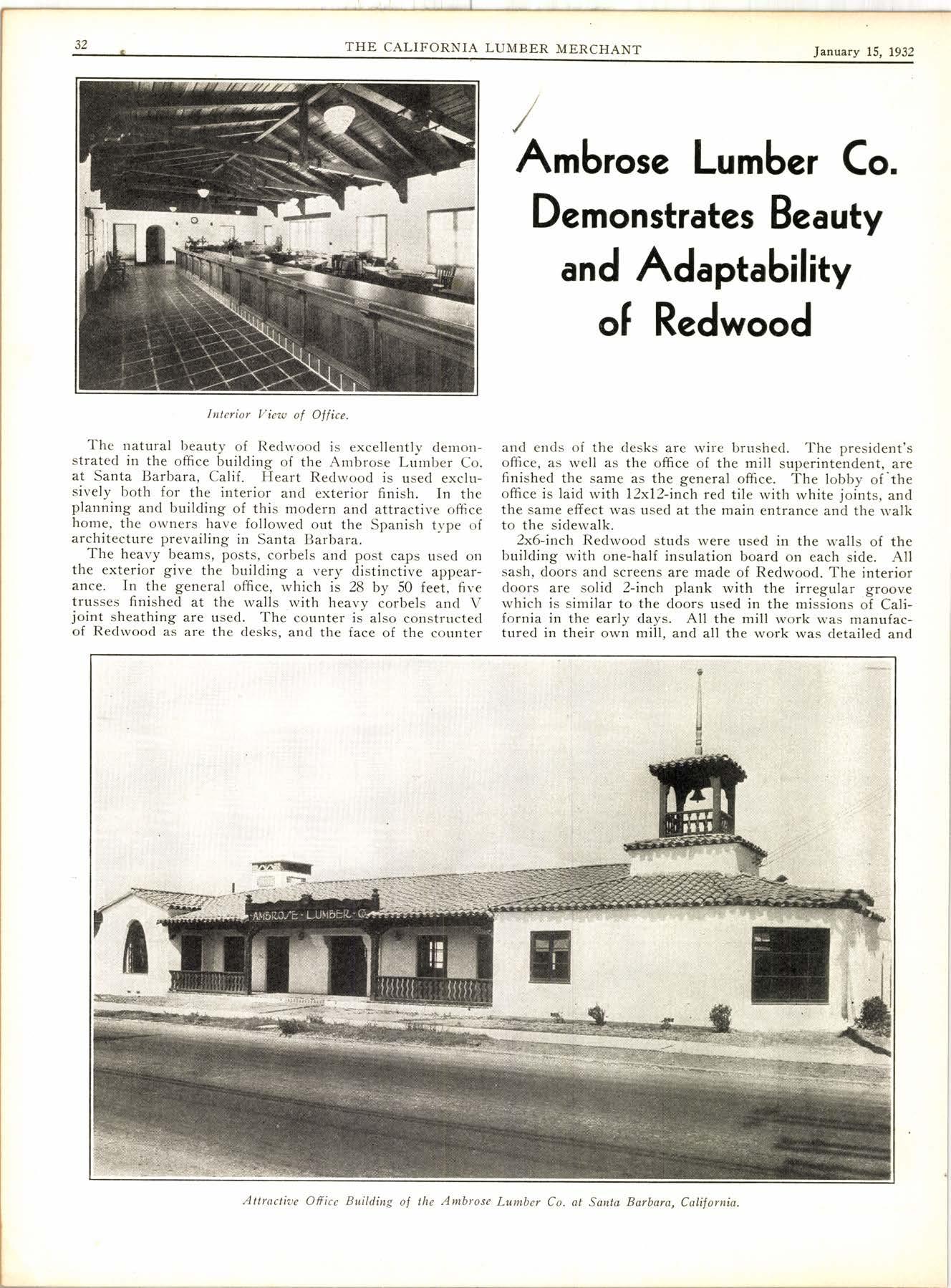
2 minute read
Plan for Suburban Homesteads
Washington, Dec. 24.-A plan for reviving home building on a large scale has been laid before the President's Conference on Home Building and Home Orvnership here which, it is thought, could become effective in the spring of 1932 if taken up at once. The author of this proposal is J. B. Fitzgerald, rvho is associated rvith tl-re West Coast Lumbermen's Association in Seattle.
The basic iclea is to establish settlements near the larger cities, either new or as parts of present suburban districts where the pressure of populatior.r as shown by under employment, high taxation and other symptoms indicates a necessity for housing relief. These new settlements are to be under the supervision of county authorities. The counties would be called upon to select low cost suitable land for the communities, grant a ten-year tax exemption and undertake to fulfill all the conditions set up by tlie general housing corporation in the u'ay of county iervices such as schools, water, light, roads, sewerage disposal, etc.
The housing corporation would sponsor the proposed communities all over the country and will be a federal corporation which will be associated with a national mortgage corporation. The latter rvill provide the mortgage funds required for the housing operations and the houslng corporation will have charge of the purchase of land, the building of homes and other structures and establish the equities on which the mortgage corporation is to base its mortgages. The mortgag-e-s are to run for 2O years and are to iep.e- sent up -t" 100 per cent of the cost of lancl and bulidings as appraised by the housing corporation.
The Federal Government would be expectecl to partici- pate either directly with an investment in the original mortgage .company or indirectly in an advisory capacity, with certain privileges and some powers.
It is proposed that the n.rortgage corporation should start with a preliminary issue of up to -9100,000,0@ of bonds. The construction industries would be exoected to take half of these bonds and the U. S. Govern-.ni the other half. It is calculated that each million dollars realized from this bond issue would provide 333 high grade homesteads or 300 homes, rvith $100,0@ left foi administration and surplus. One hundred million clollars would create approximately 100 settlements with a total of 30,000 homes. It is further calculated that to house the annual population increase of approximately 1,60O,000 would cost $1,20O,000,- 000 or $3,000 a home.
The home buyer in one of these settlements would assume -an average obligation of $3,00O, less any down payment he could make, but none to lte required. This "mount would_be liquidated,- including intereit at 6 per cent, by monthly _payments of $20 extending over 20 years.
The effect of this. plan on induitrial and- building employment, if generally applied, .ivould be to put 2,000,000 people at work directly and indirectly.
Advocates of the Fitzgerald plan point out that the pres- ent serious crisis has directed attention to the leading-part played by construction in American prosperity. It is fiared, however, that owing to the peculiar conditions of the present economic cycle small house construction will not revive anywhere near so rapidly as it did after l9T-21. The need tor houslng-ls as great now as it was ten y€ars ago, but the means of satisfying it that were then avallable aie lackrng now-; consequently, it is argued, a new set-up must be provided, to meet the new condition which threatens to deprive millions of people of adequate housing during the next few years and at the same time prevent i nor-il revival of prosperity.
"Red" Wood SAys.'
ttDontt wait until the last minute to buy Redwood. Be prepared for that rush order and keep a well balanced stock of Redwood on hand.t'










